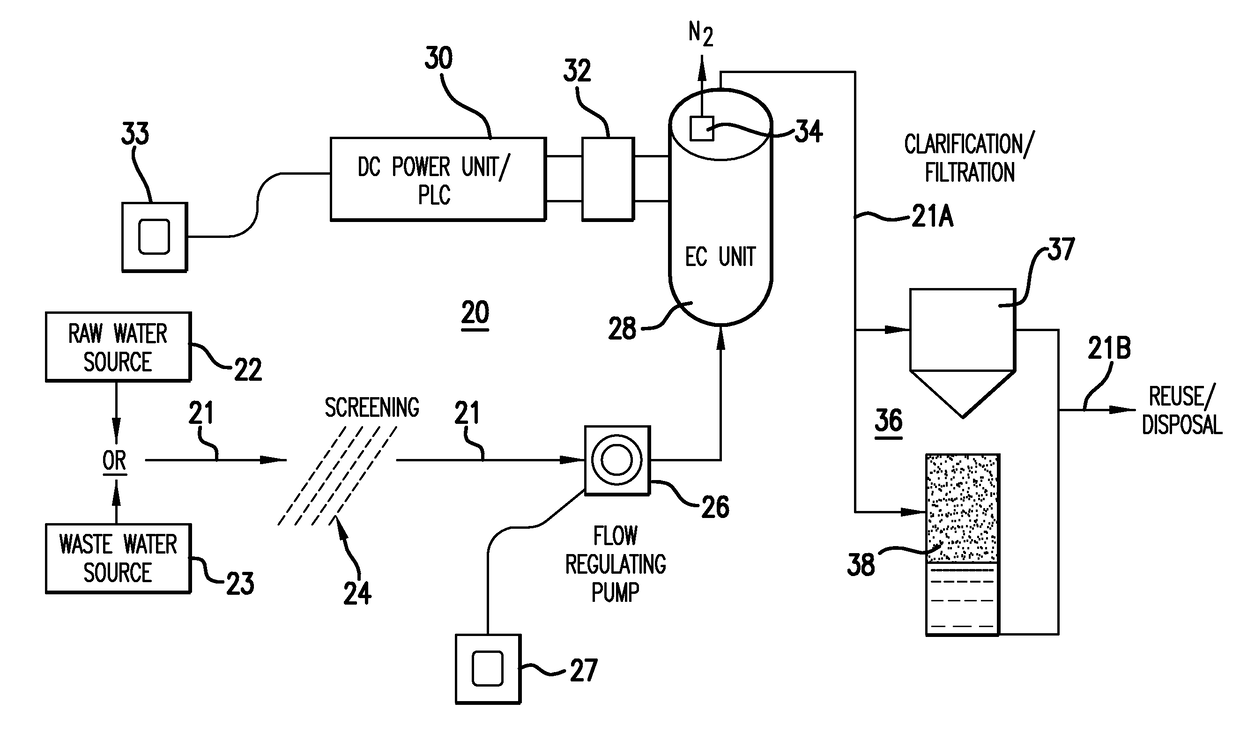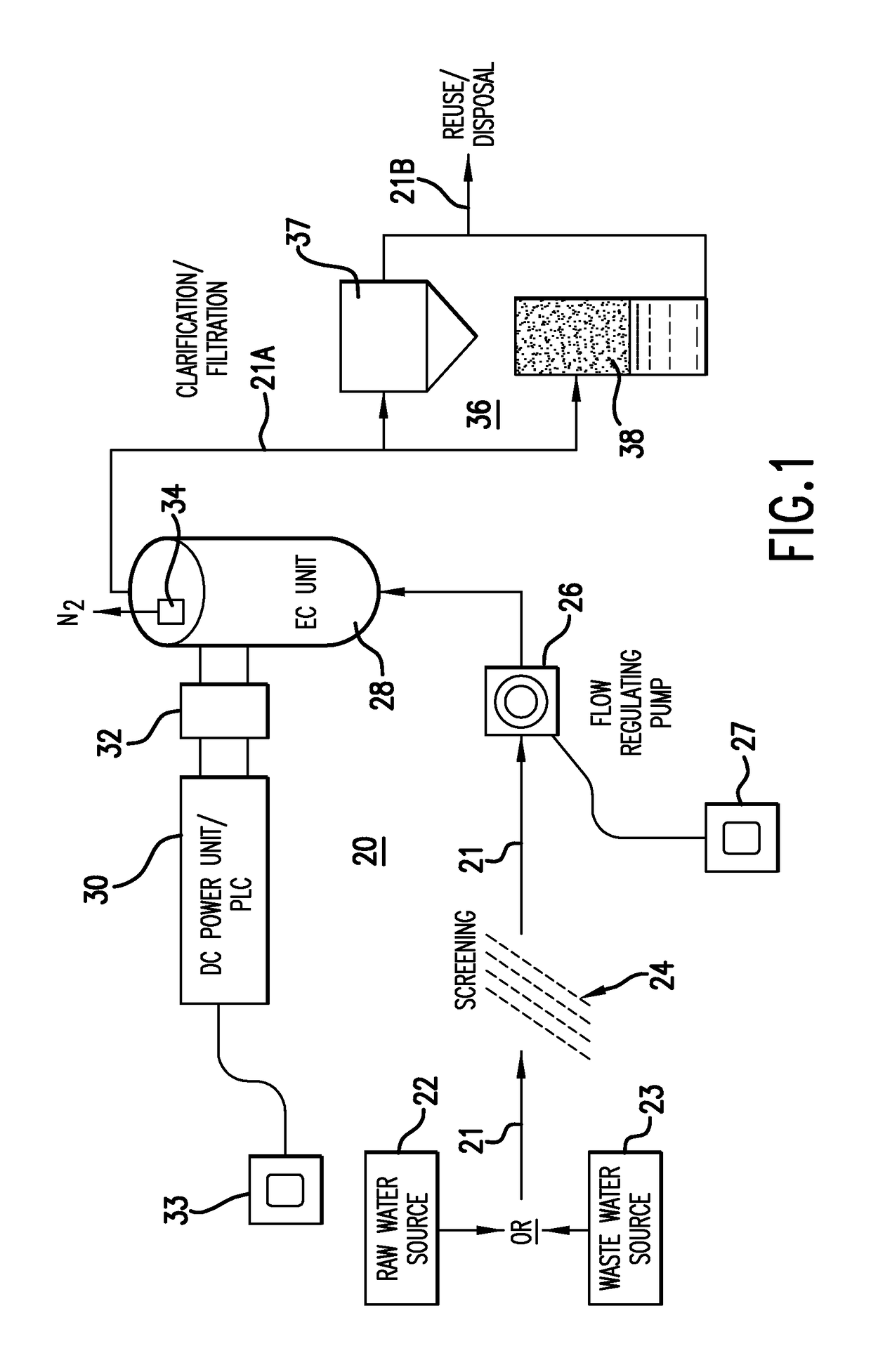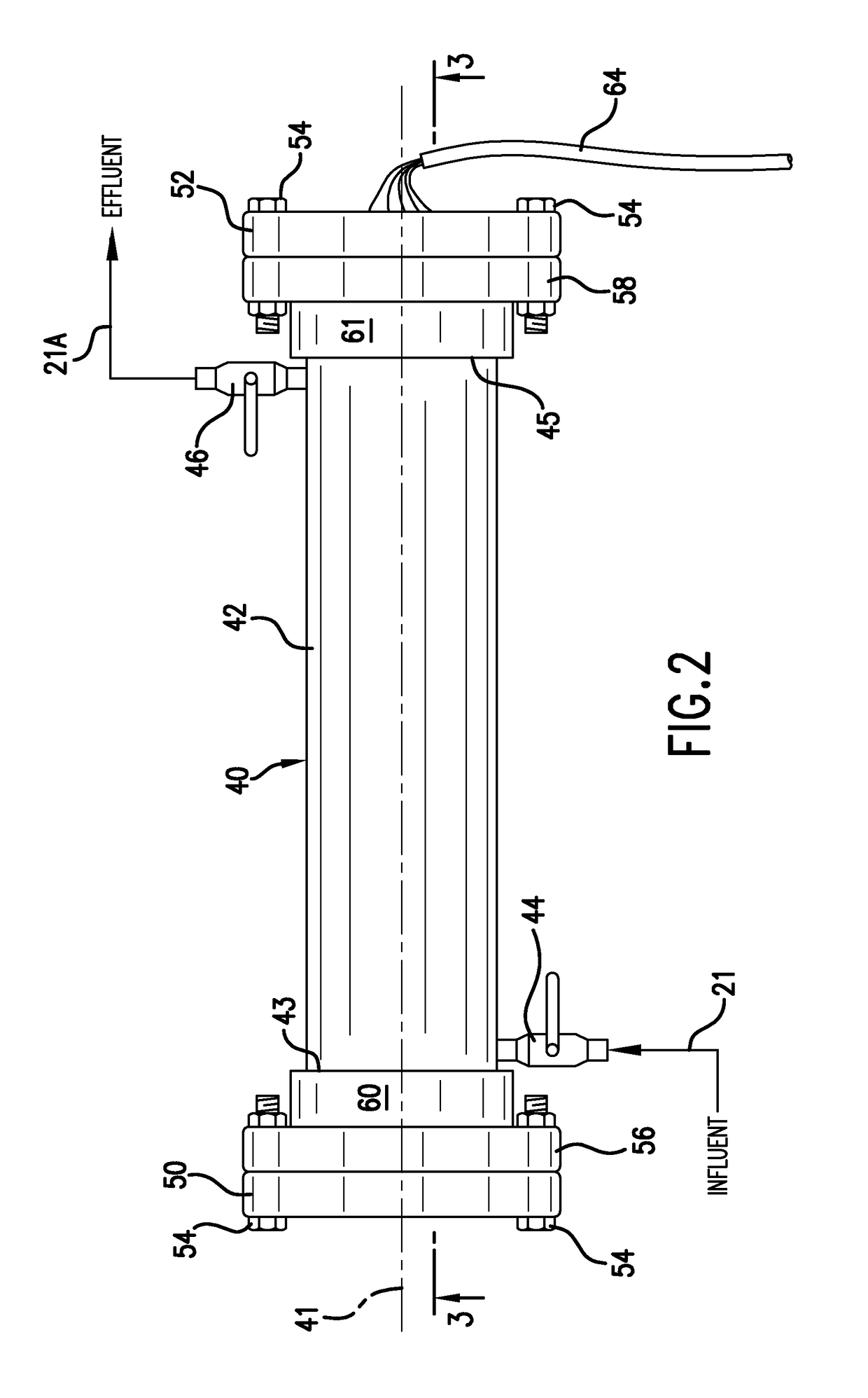Electrochemical system and method for the treatment of water and wastewater
a technology of electrochemical treatment and wastewater treatment, applied in the direction of electric circuits, manufacturing tools, electric circuits, etc., can solve the problems of prior art efforts to improve systems and electrochemical treatment methods for wastewater treatment, widespread use of chlorine, and elimination of disinfection
- Summary
- Abstract
- Description
- Claims
- Application Information
AI Technical Summary
Benefits of technology
Problems solved by technology
Method used
Image
Examples
examples
[0144]a) When using the module 100 within the dielectric container structure 130 of FIGS. 13-16, a maximum power level of about 15 Kw per module is sufficient for various applications. The actual power level applied depends on the chemical make-up of the water being treated. Preferably, the 15 Kw power supply is capable of producing direct current at 500 amps and 30 volts, or any other combination of amperage or voltage within the 15 Kw envelope.
[0145]b) In a specific example, laundry water was treated at a DC power level of 400 amps and 9 volts with satisfactory results, however a higher amperage is thought to achieve better results. The satisfactory results were achieved at a pump speed of 16.5 U.S. gallons per minute (62.46 liters per minute) with a hydraulic retention time of about 2 minutes. Specifically, removal of contaminants was observed at 95 watts / gallon [9 volts×400 amps / 38 gallons (94.74 liters)].
[0146]c) Experiments on synthetic soapy samples using the module of FIGS. ...
PUM
| Property | Measurement | Unit |
|---|---|---|
| distance | aaaaa | aaaaa |
| distance | aaaaa | aaaaa |
| DC Voltage | aaaaa | aaaaa |
Abstract
Description
Claims
Application Information
 Login to View More
Login to View More - R&D
- Intellectual Property
- Life Sciences
- Materials
- Tech Scout
- Unparalleled Data Quality
- Higher Quality Content
- 60% Fewer Hallucinations
Browse by: Latest US Patents, China's latest patents, Technical Efficacy Thesaurus, Application Domain, Technology Topic, Popular Technical Reports.
© 2025 PatSnap. All rights reserved.Legal|Privacy policy|Modern Slavery Act Transparency Statement|Sitemap|About US| Contact US: help@patsnap.com



